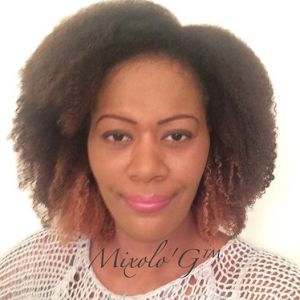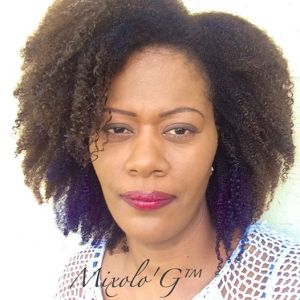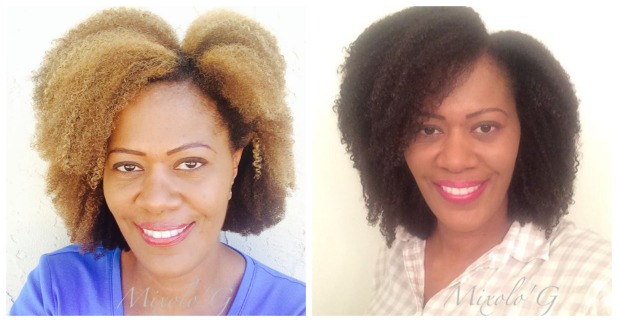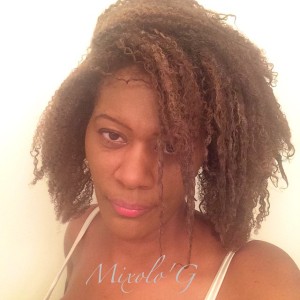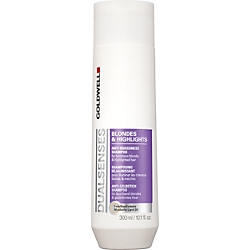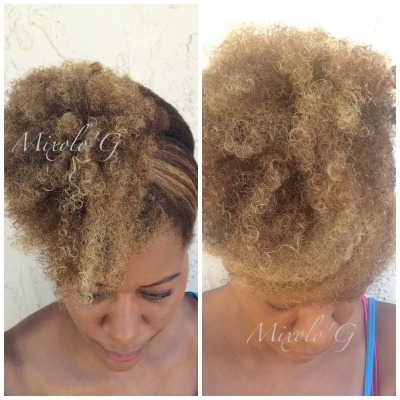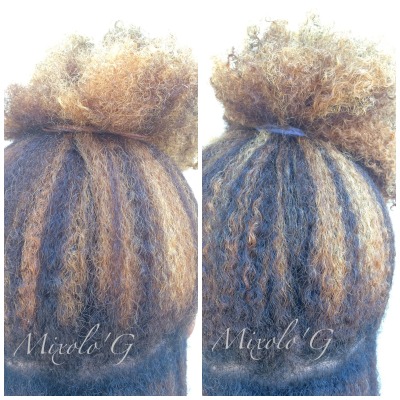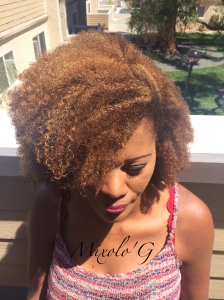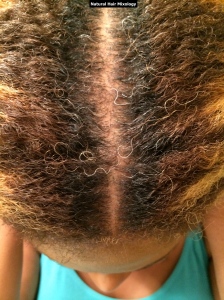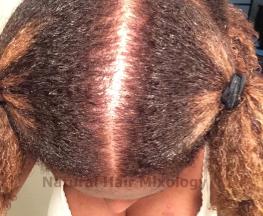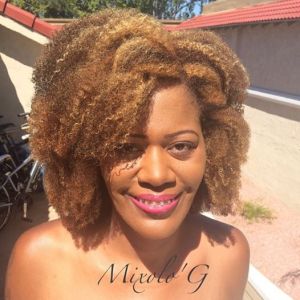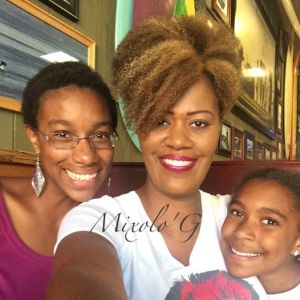I just finished what I thought would be an easy peekaboo technique with Pravana color. My strategy in doing a peekaboo technique was that as the rest of my hair grows out and gets healthy from all the summer lightening, I can still keep my hair interesting with a pop of color with the peekaboo. I had this picture in my head of lavender ombre! Well the plans changed…
Peekaboo Technique
1. I started by sectioning a 1/2 inch section around the perimeter of my hairline.
What I noticed is that I really did not like how the blonde hair was falling in the front section. The lightened front pieces on my hair looked very unprofessional, and because my hair is a direct reflection of my work, I needed to fix it. I realized I wanted to color-correct those pieces with a level 6 permanent color to match the rest of my hair before I went in with the Pravana on the highlighted section. And I am glad that I did. With natural hair, it is difficult to tell how the hair will fall until you actually style the hair.
Once I had the blonde hair the way that I wanted, I started with the Pravana lavender pastel. I figured I would start with the lightest color and see what happens. Welp, nothing much happened with the pastel color!!! My hair was not pre-lightened to a high enough level for the pastel color to show through. I was a little discouraged, but lesson learned. No Pravana pastel for me. So I tried the Pravana Neon color next. I mixed the pink and blue color and made a nice purple tone in the color bowl. I put it on my hair, and I didn’t like the ash tone that the neon was taking. I didn’t give it a chance to process fully before I tried my last resort color. I used Pravana violet on the lightened hair. I am very pleased with the deepness of the violet tone. I know Pravana will fade over time so I’m excited to see how it fades.
Peekaboo Hair Color For Subtle Drama
My hair does not feel damaged from the processing. I have not noticed any excess dryness, but I just processed it so I will keep an eye out for that.
Please let me know what you think! ❤ Ally

